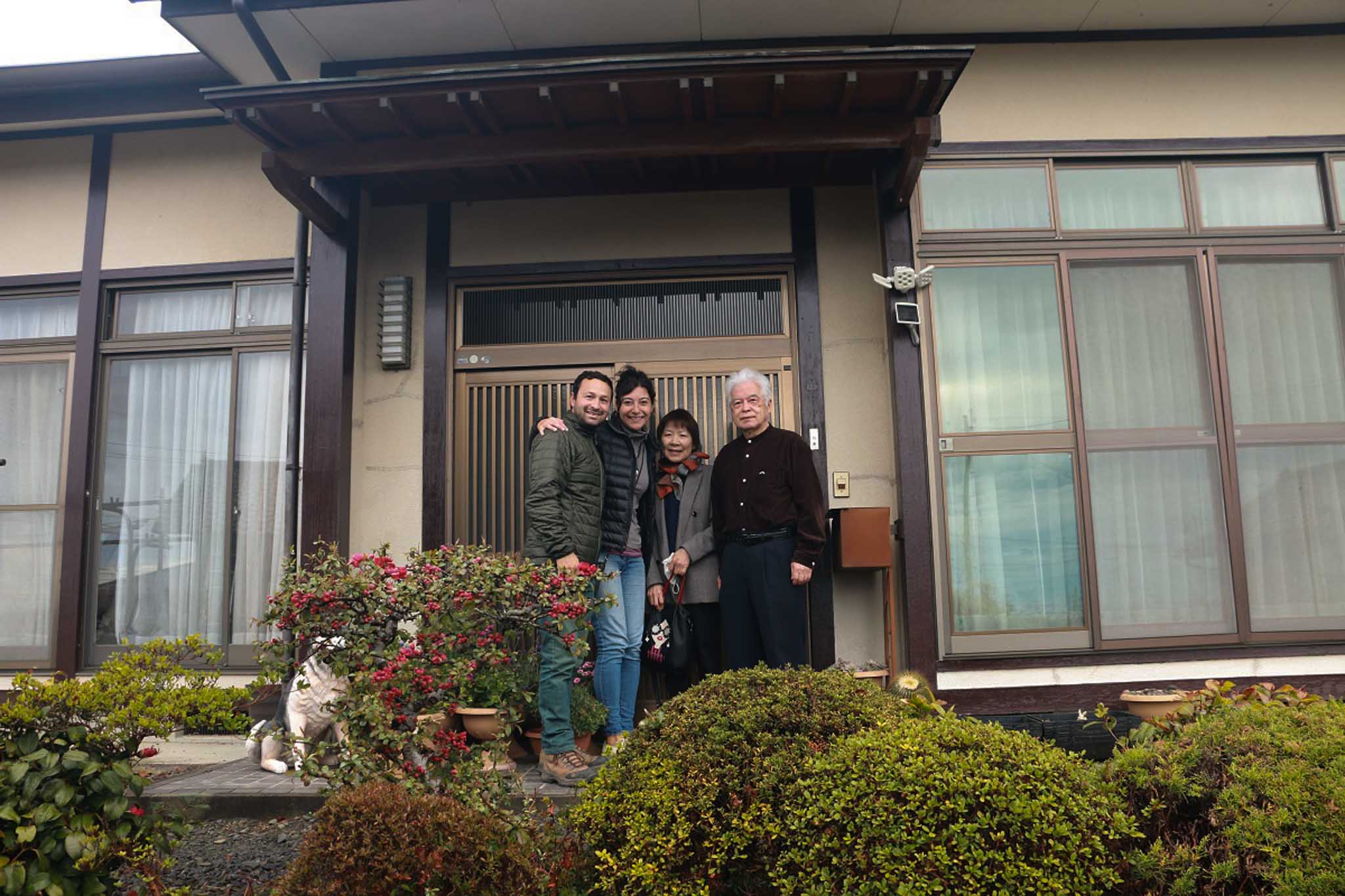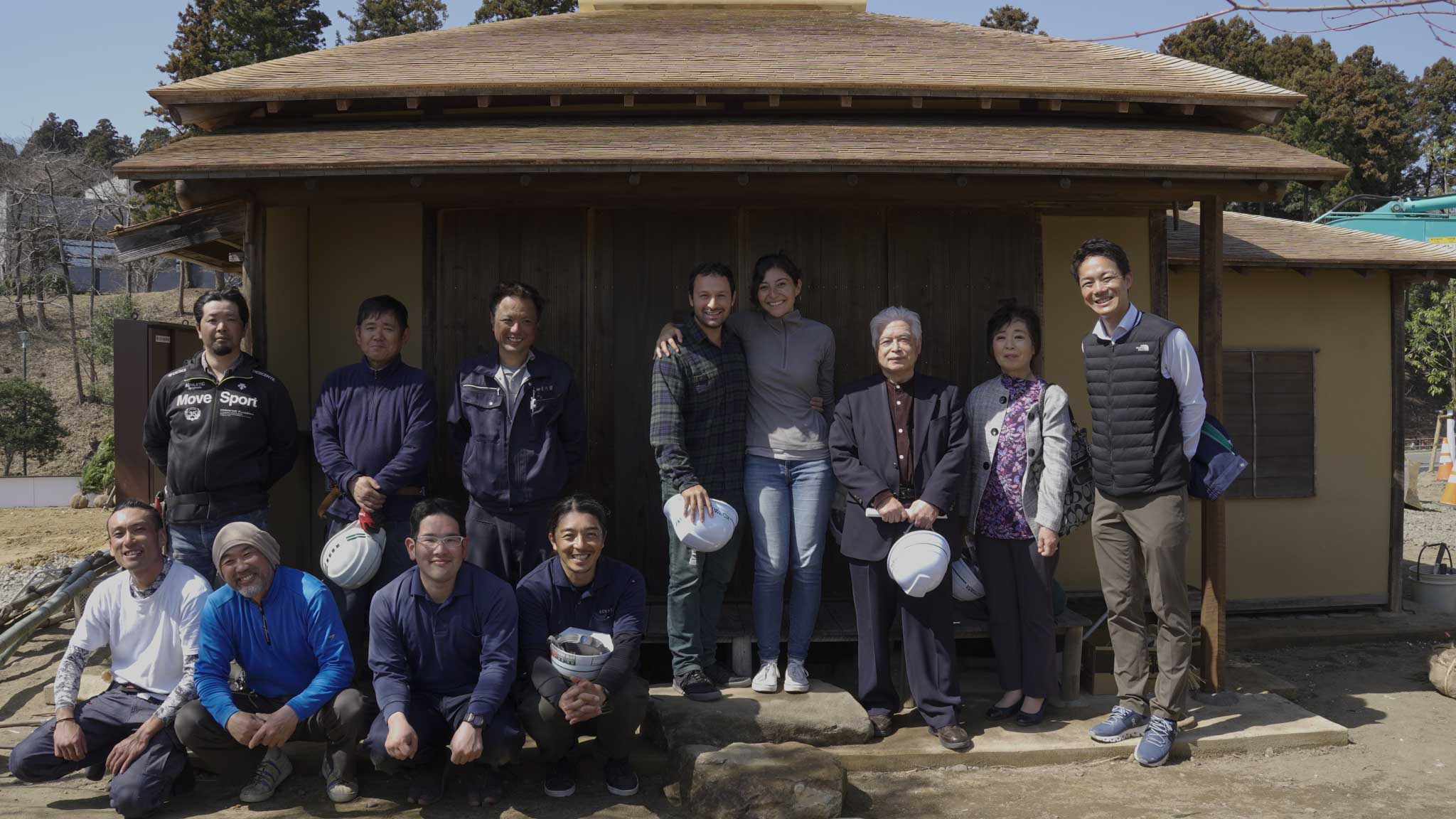A Real Corker
A prompt to encourage your practice of creativity this week from Riversider and local author Larry Burns.
Two Riversiders visit Sendai, Japan, Riverside's first sister city relationship established in 1957.

“This one is called Sakura,” Kenji-san said with excitement as he stood holding his 18th-century, nylon string guitar. It was early spring in Sendai, still cold with snow covering the tops of the many hills and bare trees exposing the leaf-covered slopes. Sakura is the Japanese term for Cherry Blossoms and this time of year is very special in their culture as the bloom only takes place for a few weeks. These Sakura represent both the beauty and brevity of life and if seen through their eyes will bring a smile to your face and heart. He played the most beautiful song with the skill of a trained musician. His fingers danced up and down the fretboard and illustrated through sound, the Sakura phenomenon. We had just finished an incredible bento dinner home cooked by his wife, Sakae-san. A serving of pink “Sakura” rice, tempura chicken, spring rolls, sesame steamed veggies, chrysanthemum soup, and other dishes I couldn’t possibly pronounce. Chrysanthemum is the Emperor’s flower and represents vitality and long life in Japanese culture. There are many symbols in this culture that can be seen all over the city and as we came to recognize them our experience of the place was deepened. At dinner, we learned about their lives through broken English and the impact that the Sendai-Riverside Sister City relationship has had for them.

In 1951 a U.S. soldier was still recovering at the Sendai American Military Hospital. It was only a few years after a brutal war culminating in an event that terrified the world and left Japan in a devastating condition. It’s easy to imagine strong feelings of anger, hatred, and animosity towards recovering U.S. soldiers but it was the exact opposite that led to a now 70-year relationship between two wonderful cities. The Association of University Women in Sendai sent flowers to the soldier for Mother’s Day and this small gesture, like a pebble in a pond, has had ripples that continue to this day. The soldier’s mother happened to belong to the Riverside branch of the same group and 6 years later the Riverside-Sendai Sister City relationship began.
Groups within the two cities have had contact almost every year since which has been documented on “The Orange Club” website by Kenji Suzuki, one of the main leaders of the Riverside committee. We were blessed to add our visit to this historical archive knowing that we have again strengthened the bonds between cities and helped fortify the future of this relationship. From arrival at the Sendai train station to departure from the same they took such great care of us. Sakae-san is an unbelievable cook and graciously made us both breakfast and dinner with exciting new foods. They welcomed us into their home which was an experience in and of itself. The home was rebuilt in the 80s in a traditional Japanese design with a modern twist however Kenji-san has lived there since his birth in 1945. The black barn in front of the house was over 100 years old and was used as a tool shed and storehouse when his parents used to farm this land. The home was simple but spectacular. Wood slat walls of Japanese cedar, and sliding doors of boxed wood with paper shades designed to absorb heat, and moisture and provide privacy, known as shoji in Japanese. The traditional prayer room with Buddhist and Shinto shrines was of particular interest and he showed me the role that these practices play in his life. The Buddhist shrine also had writings and pictures of his parents, grandparents, and great-grandparents or as he said, his “ancestors.” Every morning he prays on bent knees at the foot of the shrine, offering foods and lighting incense, a lovely way I’m sure to keep your loved ones close after they have moved on. The Shinto shrine is particular to Japan and had images above of rice, money, and other resources he gives thanks for daily. There were also offerings at this shrine, some food and two bottles of Sake, a traditional Japanese rice wine. My favorite room in the house was the Tatami room (the living room). The flooring made of woven mats is firm but soft and the room is simple. There wasn’t any furniture in the room aside from some dressers to hold decorations and a traditional Japanese harp known as a Koto. The sound of this harp was unlike anything I’d heard and was so beautiful.
During our three days in Sendai, we visited the International building which houses the most amazing Riverside Orange I’ve ever seen. For those that don’t know Riverside grew in fame and wealth as the center of the citrus empire in the late 19th and early 20th centuries. If you’re from Riverside you no doubt have seen the large orange art pieces all over town. Some can be seen in people’s front or back yards and others are displayed in prominent places throughout the city. This particular orange was gifted to the City of Sendai to commemorate the 50th Anniversary of the Sister City relationship in 2007. The central feature was a striking image of a Riverside Orange Tree intertwined and embraced with a Sendai Cherry Tree. There were recognizable landmarks such as the Mission Inn, Fox Theatre, and Mount Rubidoux complete with Cross and Peace Tower. We also recognized the Carillon Tower at UC Riverside, our alma mater, and the famous Modernist white arches of the 1953 Rivera Library Building that was once a backdrop for a Star Trek episode! The whole orange was artfully decorated with mosaic tile and is prominently displayed at the entry of the building. They also have a display with pictures, information, and various historic artifacts that have been brought by Riversiders over the years. A mallet from Poly High School from 1964, pottery, lamps, and other items.
Just outside of the International building was a large project where they are currently constructing a garden park. They took a large area and turned it into a garden display park. They have reconstructed a traditional miniature tea house, fountains, and individual displays featuring the incredible art of Japanese gardening. We learned about the Toro, a Japanese garden lamp that was used in the past to illuminate walkways among shrines, palaces, and temples. Often carved from granite these lamps are both beautiful and functional. We had the pleasure of meeting Taka and a few other master gardeners that were out there working on the park. Three years ago Taka, Kenji, and about a half-dozen other volunteers from the Orange Club visited Riverside to reconstruct the Japanese Garden at White Park Downtown. They spent several weeks working morning to night to rebuild the garden complete with plantings, granite boulders taken from Quarry Hill above Fairmount Park, a water feature, and several Toros. It’s a beautiful addition and if you haven’t had the chance to visit now may be the time. As you walk among the plants or sit in the “azumaya” or Japanese pavilion in English, it may be nice to think about the 70-year relationship between cultures, the people that volunteered to fly thousands of miles to rebuild the garden, and maybe the beginnings of your own trip to visit Sendai!

The rest of the time was spent with Kimiyo-san and Kenji-san driving through the city and visiting various points of interest. We saw the 100-meter Kannon Sama, their Goddess of Mercy that was the tallest statue in the world when it was built in 1991. It can be seen all over Sendai and is a beautiful symbol for the citizens. We also visited the Miyagi Museum of Art and were lucky to see a temporary exhibit of a famous Japanese artist and sculptor, Churyo Sato. We saw some incredible 17th and 18th-century shrines, visited the ruined site of Sendai Castle and finally, we paid a visit to the Nikka Whiskey Distillery in the mountains on the outskirts of town. Each day we had great meals with Kimiyo-san and Kenji-san and are so grateful for their time and energy in showing us their city. Amazing to think that a gift of flowers over 70 years ago was the seed that led to our journey to Sendai.
In June this year, the Sendai Orange Club will welcome a group of Riversiders for the annual SendaiMarathon so if you’re a runner you can add that event to your future list of experiences and we encourage you to join the Sendai Sister City Group, part of the International Relations Council of Riverside. Sitting in their living room listening to Kenji-san play traditional Japanese songs on both his guitar and lute was an experience we’ll never forget. We’re excited to welcome visitors from Sendai to our home in Riverside for many years to come.
Let us email you Riverside's news and events every morning. For free!